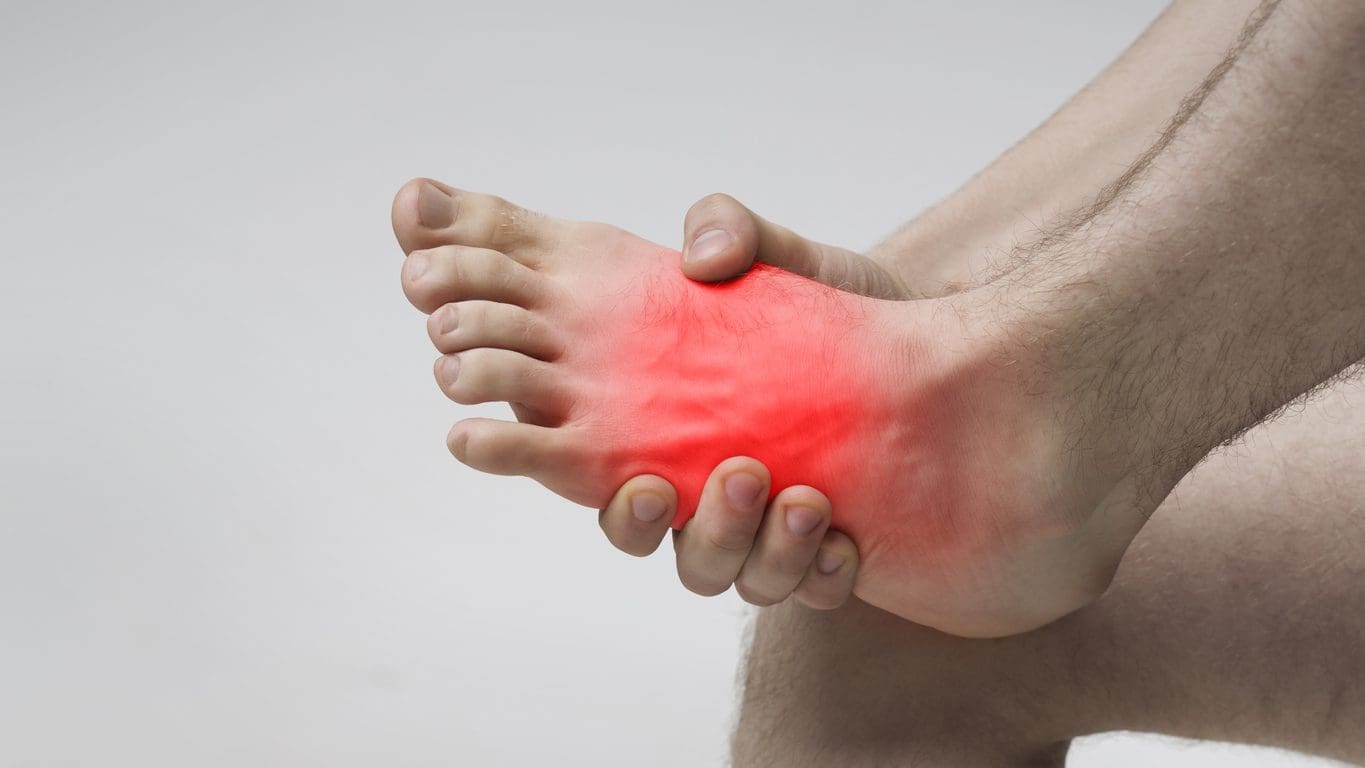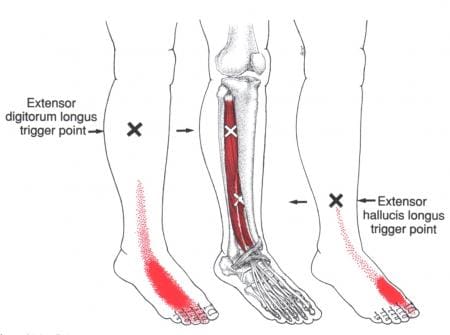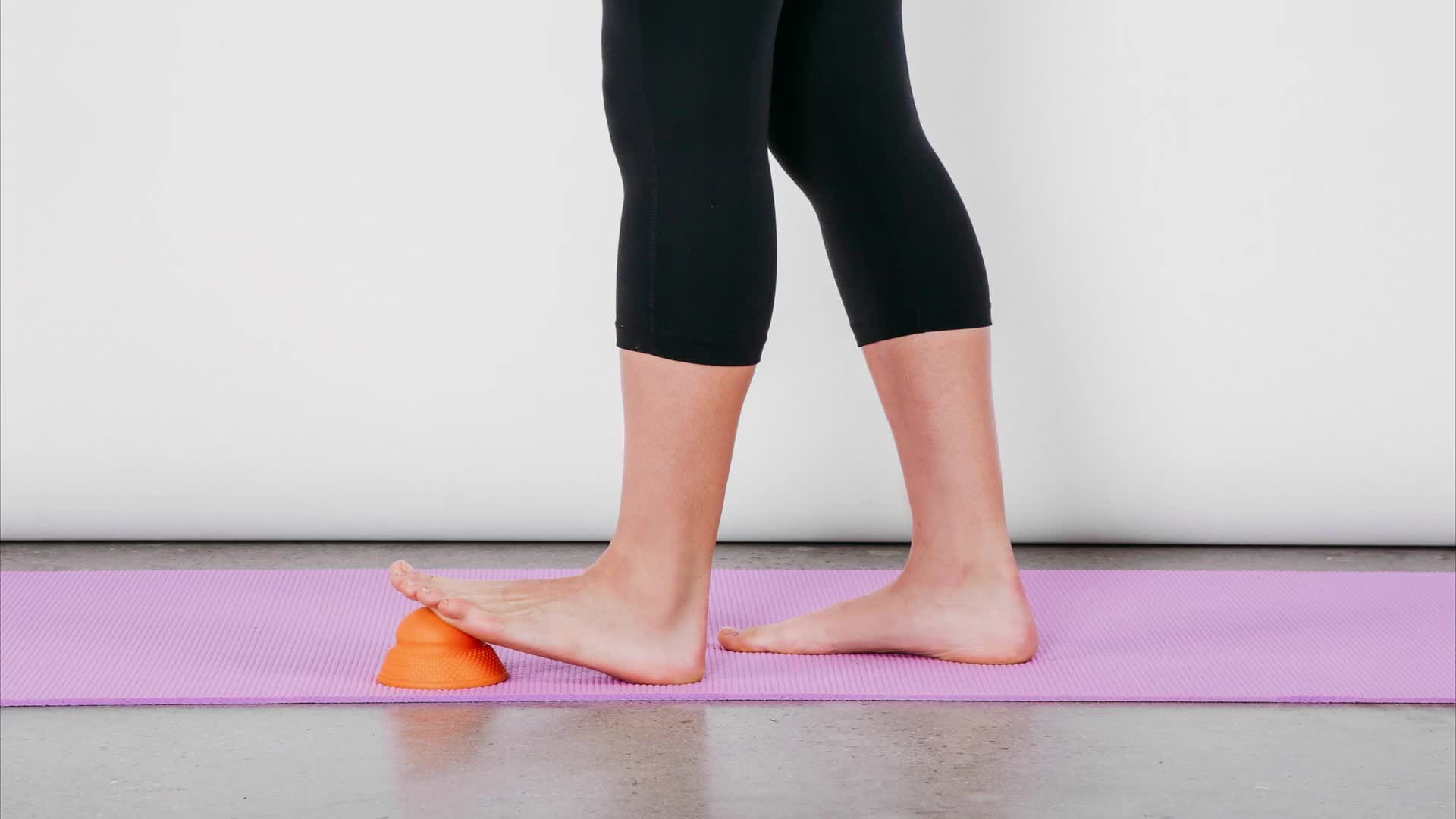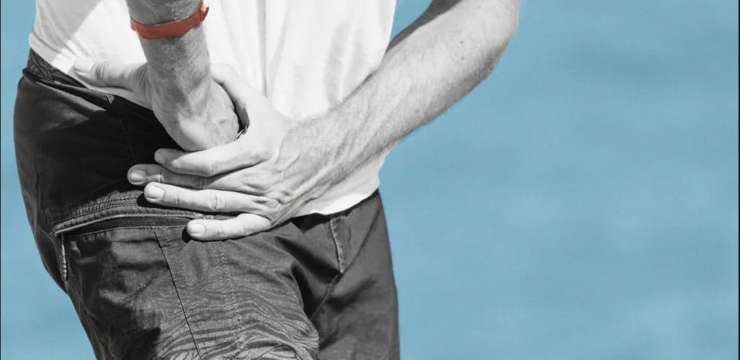
Table of Contents
Introduction
The feet allow movement to make the host do various actions when it comes to the body. Whether running, walking, or stretching, the feet allow stability with help from the legs and lower limbs of the lower body to support the upper body’s weight and allow mobility and functionality to the hips. The feet have various extensor muscles that start at the head where the tibia and in the front of the shin and spreads out to the front of the foot and allow movement to each of the toes. Injuries like ankle sprains, objects landing on the foot, or muscle cramps can cause the various muscles to become injured and soon develop tiny nodules that can cause referred pain to the lower portion of the legs and cause mobility issues. To that point, trigger point pain can affect how a person functions and cause many to deal with unquestionable foot pain. Today’s article looks at the extensor muscles of the toes, how trigger points can affect the foot and toes, and how chiropractic care can help treat trigger points along the extensor muscles of the toes. We refer patients to certified providers that incorporate various techniques in the lower body extremities, like lower legs, calves, and foot pain therapies correlating to trigger points. This helps aid many people with pain symptoms along the extensor toe muscles, causing pain when doing everyday actions like stepping or walking. We encourage and appreciate each patient by referring them to associated medical providers based on their diagnosis when it is appropriate. We understand that education is a terrific way when asking our providers intricated questions at the patient’s request and understanding. Dr. Alex Jimenez, D.C., only utilizes this information as an educational service. Disclaimer
The Extensor Muscles Of The Toes
Have you been having issues walking for long periods? Do your feet constantly ache, so you have to take off your shoes to rub them? Or have you been having mobility issues that start at the hips and then travel down to the feet? Many of these issues are associated with pain that can affect the extensor muscles of the toes. The feet have various superficial muscles that allow movement to each toe. Today, we will look at the extensor muscles that enable movement to the toes and help with lower limb functionality. The extensor toe muscles include the extensor digitorum and the extensor hallucis longus. Studies reveal that the extensor muscles are the anterior compartment of the lower limbs that can allow extension and dorsiflex of the foot at the ankle. The extensor hallucis provides movement to the big toe, independently moving it up and down. At the same time, the extensor digitorum forms into four tendons to the other toe joints.
These muscles work together to control the foot when descending and allow the heel to land first and then the toes after to prevent foot slaps or hard stepping. To that point, during this gait action, the extensor digitorum helps provide pure dorsiflex of the foot through balance on the tibial muscle. In contrast, the extensor hallucis allows the foot to adapt when the host is walking. Now, what happens when the extensor muscles suffer from injuries that cause mobility issues to the individual?
Trigger Points Affecting The Foot & Toes
When issues affect mobility and prevent many people from walking, it could be due to trigger points associated with the extensor muscles affecting the foot and toes. Trigger points or myofascial pain syndrome is where sensitive points or pressure in the muscles or muscle groups can cause referred pain in different body areas. This means that, for example, someone is dealing with pain in their elbows; however, they are complaining about shoulder pain. Studies reveal that when the legs’ lower limbs have trigger points in the feet musculature, it can lead to hypersensitivity in the extensor muscles and tendons. According to Dr. Janet G. Travell, M.D., she explained in her book, “Myofascial Pain and Dysfunction,” when the extensor muscles of the toes are being affected by trigger points, it could potentially be associated with anterior compartment syndrome and ischemia along the lower limbs. To that point, trigger points could affect a person’s ability to walk and cause them to shift their weight around to compensate for the pain from affecting them. When this happens, it can lead to hip issues.
Trigger Points Of The Week: The Extensor Toe Muscles- Video
Have you been dealing with foot pain affecting your ability to walk? Does it hurt when you are stepping? Do you have mobility issues in your hips or legs associated with foot pain? Suppose you have been experiencing any of these issues in the lower extremities of your body. In that case, you could be dealing with trigger points associated with the toe extensor muscles correlating with foot pain. Studies reveal that trigger points associated with the extensor muscles can be characterized by pain and cause a limited range of joint motion. What that does is that trigger points in the extensor hallucis muscle can cause the lower portion of the legs to have intense sensitivity and hyper-irritability to the legs, which can affect how a person walks. The video above explains where the extensor muscles are located in the lower portions of the legs and where the trigger points cause referred pain to the foot and legs. When trigger points affect the extensor muscles, they can cause referred pain to the entire lower half of the body, including the hips. How would trigger points be associated with the hips when it affects the extensor muscles? Well, when the extensor muscles succumb to pain, it causes the individual to shift their weight and can cause the hips to become unstable, and that instability can affect not only the hips but the legs, knees, calves, and feet. Fortunately, treatments can reduce trigger point pain in the extensor muscles.
Chiropractic Care For Trigger Points
So when a person is dealing with mobility issues along the extensor muscles that are causing them pain, they don’t realize that their hips, legs, and knees are being affected. By going to chiropractic treatment, they can get the relief they are looking for and regain their ability to walk. A chiropractor will thoroughly examine and assess the individual dealing with trigger points along the extensor muscles. Chiropractors can pinpoint where the trigger points are located in the affected muscle and dramatically decrease pain through manipulation. Using mechanical and manual manipulation can help realign the spine out of subluxation, and chiropractors can provide a personalized treatment plan to the individual to incorporate to prevent trigger points from returning after a few treatments. Since chiropractic care is a whole-body approach, many patients can learn healthy habits, which include using a tennis ball under the feet, light stretching on the feet, and walking correctly with good posture can prevent future injuries from coming.
Conclusion
The feet allow movement to allow the host to walk from one location to another. The extensor muscles of the toes allow mobility and stability as they work together with the legs and hips to support the upper body’s weight and stability. When injuries like ankle sprains or heavy objects landing on foot affect the extensor muscles, it can lead to trigger points associated with foot pain that can affect the hips. When trigger points affect the extensor muscles, it can cause a person to be unable to walk properly and cause more issues in the hips. When this happens, treatments like chiropractic care can manually manipulate the spine and release trigger points from the extensor muscles. With chiropractic care, many individuals will be pain-free and can walk again.
References
Lezak, Bradley, and Spencer Summers. “Anatomy, Bony Pelvis and Lower Limb, Extensor Hallucis Longus Muscle.” In: StatPearls [Internet]. Treasure Island (FL), StatPearls Publishing, 26 Sept. 2022, www.ncbi.nlm.nih.gov/books/NBK539875/.
Tornero-Caballero, Maria, et al. “Muscle Trigger Points and Pressure Pain Sensitivity Maps of the Feet in Women with Fibromyalgia Syndrome.” Pain Medicine (Malden, Mass.), U.S. National Library of Medicine, 1 June 2016, pubmed.ncbi.nlm.nih.gov/27257287/.
Travell, J. G., et al. Myofascial Pain and Dysfunction: The Trigger Point Manual: Vol. 2:the Lower Extremities. Williams & Wilkins, 1999.
Wada, Juliano T, et al. “An Anatomical Basis for the Myofascial Trigger Points of the Abductor Hallucis Muscle.” BioMed Research International, U.S. National Library of Medicine, 22 Jan. 2020, www.ncbi.nlm.nih.gov/pmc/articles/PMC6998759/.
Disclaimer
Disclaimers
Professional Scope of Practice *
The information herein on "Toe Extensors, Trigger Points, & Chiropractic Care" is not intended to replace a one-on-one relationship with a qualified health care professional or licensed physician and is not medical advice. We encourage you to make healthcare decisions based on your research and partnership with a qualified healthcare professional.
Blog Information & Scope Discussions
Welcome to El Paso's wellness blog, where Dr. Alex Jimenez, DC, FNP-C, a board-certified Family Practice Nurse Practitioner (FNP-C) and Chiropractor (DC), presents insights on how our team is dedicated to holistic healing and personalized care. Our practice aligns with evidence-based treatment protocols inspired by integrative medicine principles, similar to those found on dralexjimenez.com, focusing on restoring health naturally for patients of all ages.
Our areas of chiropractic practice include Wellness & Nutrition, Chronic Pain, Personal Injury, Auto Accident Care, Work Injuries, Back Injury, Low Back Pain, Neck Pain, Migraine Headaches, Sports Injuries, Severe Sciatica, Scoliosis, Complex Herniated Discs, Fibromyalgia, Chronic Pain, Complex Injuries, Stress Management, Functional Medicine Treatments, and in-scope care protocols.
Our information scope is limited to chiropractic, musculoskeletal, physical medicine, wellness, contributing etiological viscerosomatic disturbances within clinical presentations, associated somato-visceral reflex clinical dynamics, subluxation complexes, sensitive health issues, and functional medicine articles, topics, and discussions.
We provide and present clinical collaboration with specialists from various disciplines. Each specialist is governed by their professional scope of practice and their jurisdiction of licensure. We use functional health & wellness protocols to treat and support care for the injuries or disorders of the musculoskeletal system.
Our videos, posts, topics, subjects, and insights cover clinical matters, issues, and topics that relate to and directly or indirectly support our clinical scope of practice.*
Our office has reasonably attempted to provide supportive citations and has identified the relevant research studies or studies supporting our posts. We provide copies of supporting research studies available to regulatory boards and the public upon request.
We understand that we cover matters that require an additional explanation of how they may assist in a particular care plan or treatment protocol; therefore, to discuss the subject matter above further, please feel free to ask Dr. Alex Jimenez, DC, APRN, FNP-BC, or contact us at 915-850-0900.
We are here to help you and your family.
Blessings
Dr. Alex Jimenez DC, MSACP, APRN, FNP-BC*, CCST, IFMCP, CFMP, ATN
email: coach@elpasofunctionalmedicine.com
Licensed as a Doctor of Chiropractic (DC) in Texas & New Mexico*
Texas DC License # TX5807
New Mexico DC License # NM-DC2182
Licensed as a Registered Nurse (RN*) in Texas & Multistate
Texas RN License # 1191402
ANCC FNP-BC: Board Certified Nurse Practitioner*
Compact Status: Multi-State License: Authorized to Practice in 40 States*
Graduate with Honors: ICHS: MSN-FNP (Family Nurse Practitioner Program)
Degree Granted. Master's in Family Practice MSN Diploma (Cum Laude)
Dr. Alex Jimenez, DC, APRN, FNP-BC*, CFMP, IFMCP, ATN, CCST
My Digital Business Card









